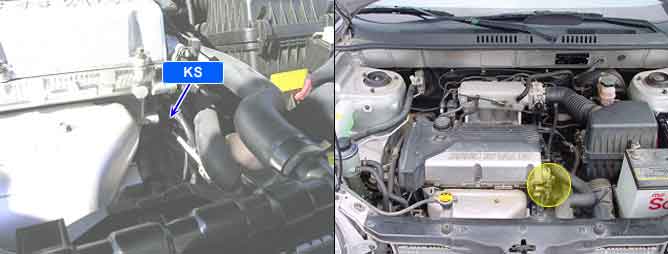

Knocking is a phenomenon characterized by undesirable vibration and noise and can cause engine damage. The knock sensor (KS) is attached to the cylinder block and senses engine knocking. A knocking vibration from the cylinder block is applied as pressure to the piezoelectric element. The knocksensor (KS) detects vibration upon increase and decrease in engine RPM and generates a voltage based on this vibration. The PCM controls the ignition timing based on the amplitude and frequency of the knock sensor signal. For example, if engine knocking occurs, the ignition timing is retarded to suppress it.
If there is rarely change compared with previous knock sensor’s signal, the PCM determines that a fault exists.
Item | Detecting Condition | Possible cause |
DTC Strategy | ● Signal at current segment is compared to previouse one | ● Poor Connection ● Open or short in knock sensor circuit ● Faulty Knock Sensor ● Faulty PCM |
Enable Conditions | ● Time after start > 2sec ● Engine speed > 2500rpm ● Load value > 30% | |
Threshold value | ● Amount of change < 0.06V ● Counter that above condition is fulfilled ≥200times | |
Diagnosis Time | ● Continuous |